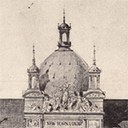0198 The Restricted Design Competition for the New York Life Insurance Company Building in Budapest
A Late Nineteenth-Century International Design Competition in Central Europe
Identifiers (Article)
Identifiers (Files)
Abstract
Rapid industrialization and urbanization in Europe and the United States introduced new building types and new methods of construction, leading to important changes in the architectural landscape of major cities. Public and corporate construction proliferated, and design competitions were called upon to identify architectural projects that best suited the needs of a particular state institution or private company. Although initially these competitions were open to all members of the architectural profession, towards the end of the nineteenth century, their format changed to be more effective, with only a restricted number of architects competing for the commission. The present paper focuses on the competition for the New York Life Palace in Budapest and sheds light on its connections with the international trends.
Statistics


License

This work is licensed under a Creative Commons Attribution-NonCommercial-NoDerivatives 4.0 International License.



